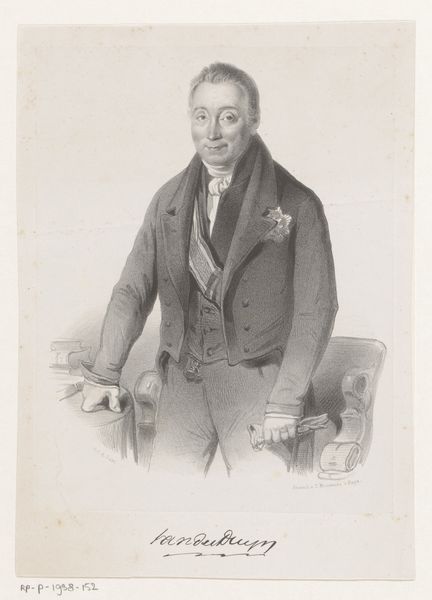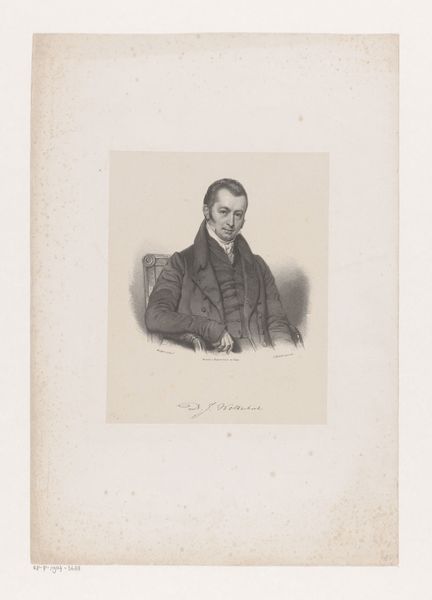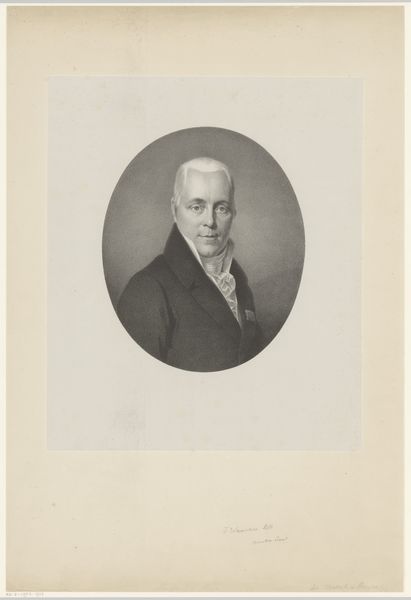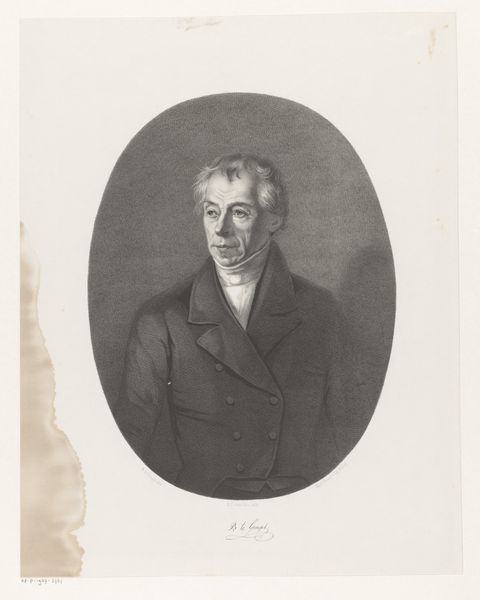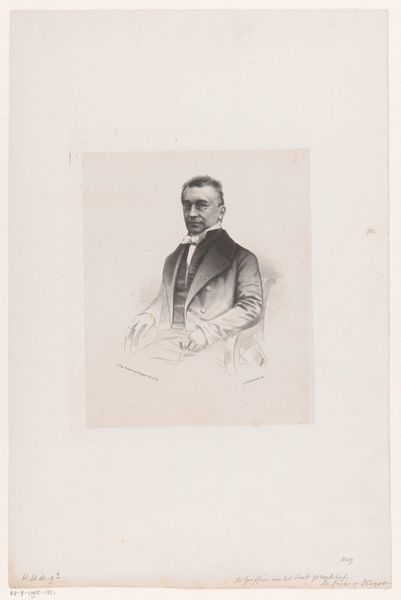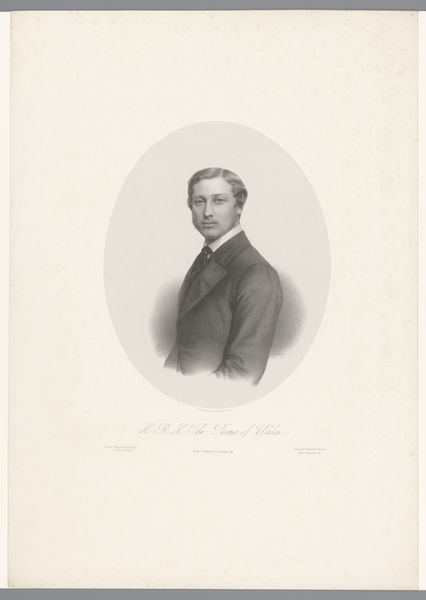
Portret van Johannes Jacobus van Oosterzee 1817 - 1895
0:00
0:00
#
print photography
#
personal snap photobooth
#
picture layout
#
wedding photograph
#
photo restoration
#
archive photography
#
historical photography
#
couple photography
#
photo layout
#
celebration photography
Dimensions: height 434 mm, width 333 mm
Copyright: Rijks Museum: Open Domain
This portrait of Johannes Jacobus van Oosterzee was made by Jean Baptiste Alfred Cornilliet using lithography, a printing process that relies on the chemical repulsion of oil and water. Lithography democratized image-making in the 19th century. A design is drawn on a stone or metal plate with a greasy crayon, then treated with acid. Ink adheres to the greasy areas but is repelled by the wet, blank areas. The printmaker then transfers the image to paper. Unlike traditional engraving, lithography allowed artists to draw freely, lending the print a more spontaneous feel. The shades and details in this portrait result from the artist’s skillful manipulation of the crayon on the plate, balancing precision and nuance in the final print. This process was critical in expanding visual culture, making art accessible to wider audiences and thus challenging traditional hierarchies in the art world. The lithographic print became a powerful medium for disseminating images, ideas, and social commentary.
Comments
No comments
Be the first to comment and join the conversation on the ultimate creative platform.

